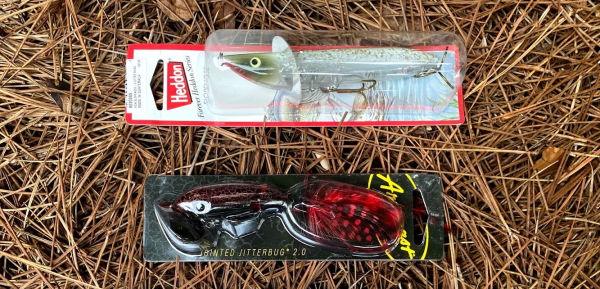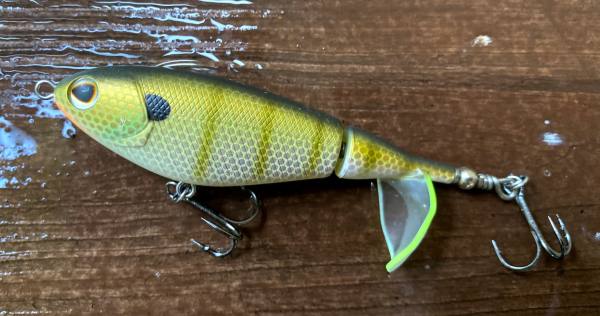| By Frank Sargeant, Editor What’s old is new again with a couple of true classic lures reincarnated by PRADCO and released as part of the July virtual ICAST. The Jitterbug from Arbogast, with the identifying metal cup on the nose, has been around since the early 1940’s, while the company says the equally odd-looking Heddon Slopenose originated in about 1902—it was the first commercially-produced lure developed by legendary lure designer James Heddon, according to the company.  Of course the modern versions of the lures have some significant upgrades, including durable synthetic bodies, complex multi-coat paint-jobs and upgraded ultra-sharp treble hooks. But the original action and shape are still there in each. Of course the modern versions of the lures have some significant upgrades, including durable synthetic bodies, complex multi-coat paint-jobs and upgraded ultra-sharp treble hooks. But the original action and shape are still there in each.The Slopenose is designed to perform as something between a popper and a stickbait. The weird-looking collar acts to catch water and make a satisfying splash when jerked, a plus for aggressive schooling bass, and it can be bobbed up and down in place to fool more cautious bass in flat water situations. This is not a lure that pops easily like a Rebel Pop-R, however. It takes a bit of a touch, but with just a little practice it’s possible to make it dance in place while fluttering and splashing—the bass in my Alabama home lake loved it. Best action came from three short hard twitches, followed by a 10 second rest, then three more, etc. This lure also looks like it has some serious saltwater possibilities for lunker trout and snook in the surf, and big redfish around the jetties–I’ll be trying that this fall if all goes well. The new Jointed Jitterbug 2.0 not only has a wobbling jointed tail section, but also a large feathered treble as the tail hook. The thing comes across the surface much like a buzzbait, with a classic “bobbling” sound that identifies this iconic lure. However, the Jitterbug has the advantage of being a floater—you can stop and pop it in place now and then, adding to the attraction. The long feathered tail makes a sinuous aft wake behind—the thing looks a bit like a small water snake on the move. The lure is offered in cool-looking crackle-paint patterns, and has an anodized aluminum headplate—the lure won’t corrode when used in brackish water.I note that keeping the lure bobbling requires positioning the rod tip just above water level—raise it up and the lure loses traction—and fish appeal. Otherwise, it’s a very easy lure to fish, good for the kids to learn topwater fishing. It doesn’t take the line control or the timing of a topwater twitchbait. You can see more on both these PRADCO brands at www.lurenet.com.While we’re on a topwater roll, check out the new Choppo from Berkley. This one also qualifies as a weird-looking lure, but it’s a modern invention. The separate tail has an off-center fin or blade that rotates as the lure is cranked. This causes the whole tail section to rotate, creating a “plop-plop-plop” sound not unlike that produced by the Jitterbug, above, and with similar fish-attracting possibilities.  The Choppo shape is more shad-like, so it works well around bass busting bait schools on top as well as over shallow grass and around shoreline cover. It comes in three sizes, with the 90 mm ½ ounce version a favorite for spotted bass and smallmouths, the larger 105 and 120 mm versions usually best for largemouths. The 120 is also a good wake bait for striped bass in cooler weather when the fish go shallow chasing shad. The Choppo shape is more shad-like, so it works well around bass busting bait schools on top as well as over shallow grass and around shoreline cover. It comes in three sizes, with the 90 mm ½ ounce version a favorite for spotted bass and smallmouths, the larger 105 and 120 mm versions usually best for largemouths. The 120 is also a good wake bait for striped bass in cooler weather when the fish go shallow chasing shad.All three sizes also can function as topwater jerkbaits, with plenty of splash when twitched along steadily. As with all topwaters, the action is brought out best with no-stretch braided line and a fast-action rod. All of these lures have the new Berkley Fusion 19 trebles, some of the sharpest, “stickiest” hooks on the market. See more at www.berkley-fishing.com. |